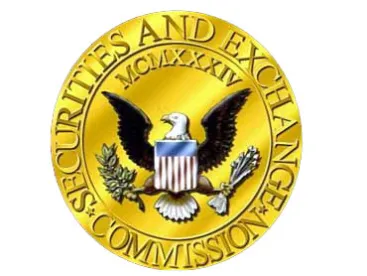On October 16, the SEC publicized its preliminary enforcement resultsfor fiscal year 2014. In what it described as a “successful enforcement year,” the Commission brought a record 755 actions and obtained $4.16 billion in penalties and disgorgement. These 2014 figures translate to an average of $5.5 million per action, which is 11% higher than the penalties and disgorgement obtained per action in fiscal year 2013 and a whopping 30% upsurge from just two fiscal years ago. It is not a coincidence that these developments correspond neatly with the appointment of Mary Jo White as SEC Chair in 2013. In fact, Chair White has been candid from the outset of her tenure about the Commission’s intention, under her direction, to “make aggressive use of our existing penalty authority, recognizing that meaningful monetary penalties—whether against companies or individuals—play a very important role in a strong enforcement program.”
It would appear, however, that at least one high-ranking SEC official has become uneasy during this era of heightened civil penalties. Speaking at the Securities Enforcement Forum in Washington, D.C., just two days before these results were released, Commissioner Michael S. Piwowar openly questioned whether the manner in which the SEC now administers penalties might be encroaching upon due process protections. As Commissioner Piwower explained:
In recent months, I have become concerned by the increasing number of staff recommendations that have not been accompanied by analysis of the principal factors described in the 2006 penalty statement. If we were a publicly-traded company, then we would likely be subject to an investigation if we knowingly permitted a misleading statement to remain outstanding without corrective disclosure. More importantly, we will have not accorded appropriate due process if we fail to follow our own publicly-announced framework for monetary penalties.
. . .
Thus, for purposes of transparency, clarity, and, most importantly, due process, the Commission should be forthcoming as to the appropriate analytical framework for corporate penalties.
The “2006 penalty statement” referenced in Commissioner Piwowar’s speech represents the Commission’s most recent effort to provide the investing public with “the maximum possible degree of clarity, consistency, and predictability in explaining the way that its corporate penalty will be exercised.” While this pronouncement set forth nine factors that may be weighed, the appropriateness of a penalty reportedly hinges on two principal considerations: – (1) whether the company received a direct benefit as a result of the violation and (2) whether the penalty will recompense or further harm the injured shareholders. This latter consideration, in particular, is inherently controversial. As the SEC acknowledged in the 2006 Statement, the penalties it imposes on public companies are costs frequently endured by innocent shareholders who already have been harmed by the company’s purported misconduct. Hence, SEC penalties should not be perceived as adding further insult to the financially injured.
Based on Commissioner Piwowar’s comments, the SEC may be drifting away from these factors, even though it has published no further guidance explaining which factors might now be disfavored or what other considerations could apply. If so, these recent developments cast a renewed spotlight on comments that Chair White made regarding the SEC’s 2006 Statement during a September 2013 speech to the Council of Institutional Investors. Most notably, Chair White stated:
While it is not a binding policy, the 2006 press release in my view sets forth a useful, non-exclusive list of factors that may guide a Commissioner’s consideration of corporate penalties, such as the egregiousness of the misconduct, how widespread it was, and whether the company cooperated and had a strong compliance program. The enforcement staff still references these factors as well as other inputs when analyzing and proposing their own recommendations to the Commission.
Ultimately, however, each Commissioner has the discretion, within the limits of the Commission’s statutory authority, to reach his or her own judgment on whether a corporate penalty is appropriate and how high it should be.
Interestingly, Commissioner Piwowar’s comments seem to reflect a general apprehension, at least on his part, to exercising discretion that is limited only by statutory constraints when the factors and “other inputs” used to determine the appropriateness of such penalties have not been disclosed publicly. To remedy this perceived problem, Commissioner Piwowar advocated that any revision to the 2006 Statement should be made through an interpretative release that would be subject to a notice-and-comment process. In his view, “This approach will satisfy any due process concerns, allow all interested persons to express their comments on the proposed framework, and provide a stronger defense of our approach should it be challenged in the future.”
Absent such an administrative undertaking or an unexpected reversal of policy, it likely will be left to the judiciary whether to impose any additional limitations on future SEC penalties. If the United States Court of Appeals for the District of Columbia’s decision in Collins v. SEC, No. 12-1241 (D.C. Cir. Nov. 26, 2013), provides any foresight, courts may be receptive to tethering future penalties so that they reasonably align with prior outcomes under similar circumstances. In Collins, the appellant challenged the SEC’s imposition of a penalty on grounds that it was arbitrary and capricious and violated the Excessive Fines Clause under the Eighth Amendment. Id. at *6. While the penalty was upheld, the appellate court made clear that the Commission cannot be “oblivious to history and precedent” and that a penalty could be deemed “arbitrary and capricious” if “the sanction is out of line with the agency’s decisions in other cases.” Id. at *8 (quoting Friedman v. Sebelius, 686 F.3d 813, 827-28 (D.C. Cir. 2012)). It remains to be seen, of course, what circumstances could trigger such a decision, although additional appeals – and judicial insights – seem likely in fiscal year 2015, particularly if the financial stakes continue to rise. In the meantime, the SEC appears more focused on making history and precedent, in part through the imposition of larger civil penalties, than being closely guided by it.




 />i
/>i

